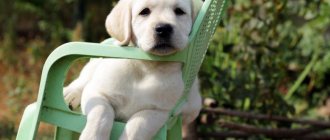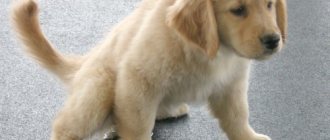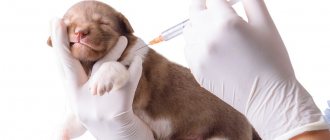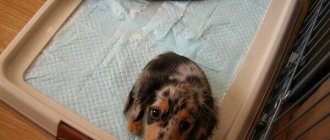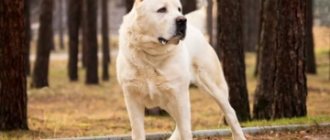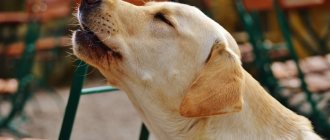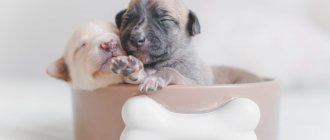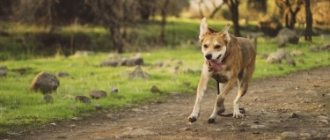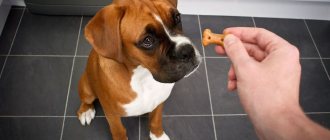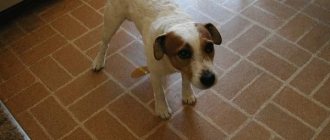When a puppy is purchased, the owners understand that the toilet will not be mastered immediately. Up to a certain point, puddles on the floor are considered normal.
Typically, a puppy learns to go to the toilet outside within a few months. If this does not happen for more than six months, then perhaps the owners are doing something wrong. Pet illnesses or psychological problems cannot be ruled out.
Another question is when an adult dog started leaving puddles in the house. It’s worth thinking about it, analyzing the situation and helping the animal.
How to teach a puppy to go to the toilet
Being patient is the key to toilet training your puppy. Also, remove carpets and expensive rugs. Cover the sofa with oilcloth or limit access to it. Not allowed into the bedroom. Place a special tray if the puppy is a decorative breed. Spread newspapers on the floor in the animal's habitat.
It must be remembered that a new environment is stressful for a pet.
Understanding and patience will help you master the “toilet” science. Sometimes incidents happen in the form of puddles. This is temporary, the baby is still learning. Every day he will understand better and better what they want from him.
If the puppy is a large breed, then you need to immediately accustom it to the street. Otherwise, he gets used to the tray, newspapers and diapers. And he continues to go home. There is an option - put a cup of food where the puppy gets into the habit of relieving himself. Dogs do not go to the toilet in the same place where they eat.
What actions should the owner take to successfully train the puppy to use the toilet outside:
- Don’t scold for mistakes, but simply clean up.
- Take him for a walk 5-6 times a day.
- Remove things that are dear to you from your pet's access.
- Go outside after sleep and before it.
- Repeat these steps consistently every day.
- Praise after relieving yourself on the street.
- After the toilet, play with the baby.
In order for the puppy to understand what they want from him, you need to repeat the walks constantly and on time. Then the pet will learn that they only play with it after using the toilet. That they praise him, which means he did everything right. Talking and jogging after bowel movement helps.
When the puppy has mastered the time and place of going to the toilet a little, you need to increase the intervals between walks. First for 10 minutes, then for 20 and gradually reduce to 2-3 walks.
In a month or two, the puppy will learn to go about its business only outside.
Recovery
The duration of recovery depends on the cause of the problem. Many dogs regain normal urination, but some may need a catheter that remains inside the body for several days to weeks to maintain urine flow and a healthy bladder size. Over time, the bladder may regain its ability to function normally.
If your dog has a spinal cord injury or nerve damage, your veterinarian will teach you how to manually empty his bladder. Regular clinical visits will be necessary to ensure your dog remains healthy from your veterinarian. Frequent urine tests may be needed for some time, as well as antibiotic therapy. Eating a healthy diet and getting enough exercise is also important. Recurrence is possible, so take your dog to the vet immediately if you suspect a recurrence or potential infection.
Sources for writing this article:
- Inability to urinate in dogs https://wagwalking.com/condition/inability-to-urinate
If an adult dog shits in the apartment
An adult dog, educated and trained, always waits until a walk. If the owner could not get it out in time, then, of course, the animal will probably make a puddle. This cannot happen often. Walking your pet on time is important for its behavior. Otherwise, you may develop a habit of making puddles in your apartment.
If the dog is unwell or has suffered stress, then involuntary urination occurs. This happens with diseases of the kidneys, bladder, and urinary tract. Or if you have problems with digestion. Therefore, first you need to take the animal to the veterinarian for examination.
Surprises can also happen during treatment. Only patience and affection towards your pet will save you here.
What other reasons could there be for going to the toilet in the house:
- Cold weather. You need to dress your dog in warm clothes or reduce the duration of walks.
- Stubbornness. A dog may make a puddle on purpose. Then you will have to reconsider your upbringing.
- New walking area. You may not like it or you may be scared by new unfamiliar dogs.
- Not accustomed to since childhood. The dog is simply not used to going outside. You'll have to retrain.
All of these cases are temporary. After recovery, the onset of warmth, and getting used to the new place, the pet will return to its previous life.
If the dog is stubborn, then training and developing obedience will help him; in this case, a dog handler may be needed to correct the behavior.
If an adult dog is used to going to the toilet anywhere, then you will have to teach it again. This requires patience and consistency. Like a puppy, such a dog is bred 5-6 times at first. Praise and give treats after bowel movement is complete. You can play and talk with the animal only after using the toilet.
During training, you need to pay close attention to your pet's behavior. When a dog wants to go to the toilet, it sniffs corners and beds. Then she is immediately taken out for a walk.
Two to three months will pass and the dog will learn to do its “toilet” chores outside. You cannot scold, much less beat, an animal. It will only get worse.
How to know when it's time to take your puppy outside
During the process of toilet training your dog, ideally you need to take your pet outside every time he wants to relieve himself. There are both standard situations and spontaneous moments that the puppy will try to signal to you. The sooner you learn to understand a dog's hints, the sooner your four-legged friend will stop dirtying floors and carpets. Take a closer look at your dog, learn to read its behavior patterns.
The collection contains the most common cases when a dog wants to go to the toilet.
- After waking up.
- The puppy has eaten or drunk.
- He starts to sit down.
- He has just been released from his cage, playpen, enclosure, bathroom, small room, or other confined space.
- The dog chewed on some object for a long time, and then stood up and fell into a stupor.
- The pet has become more active and excited than usual.
- And vice versa, he looks confused, lost, does not know what to do with himself.
- The dog has moved away from the place where it previously played or rested and sniffs the floor.
- The puppy came to where he had shitted earlier and began to sniff the floor.
- Basically every time he sniffs the floor.
- The dog began to often look at the door or run around the corridor, as if he wanted to leave the apartment.
- She walks from side to side and whines.
- The puppy refuses treats or play.
- When a pet plays for a long time and with excitement - especially with other pets or people - he can become so immersed in the process that he forgets about finding a suitable location for the toilet. Instead, the baby will simply sit down when he feels like it. To prevent such an accident, alternate long games with bathroom breaks.
Take your pet outside at least every hour when he is active. You can go out even more often in the morning and evening. This is absolutely normal during the learning process.
What to do about urinary problems in dogs
Serious pathologies with urination, characterized by the presence of additional, in addition to the apparent decrease in the amount of urine, do not allow any self-medication.
Important! Under no circumstances, without a direct prescription from a doctor, should you independently give your dog diuretics, antispasmodics, laxatives and other drugs intended to stabilize the functioning of the genitourinary system.
If the pet’s condition is satisfactory and there are no direct reasons for immediately contacting a veterinarian, making small changes to the dog’s living conditions can help eliminate the problem.
First of all, this concerns:
- the presence of a constantly filled drinking bowl, which the animal can approach at any time of the day, and the water must be constantly changed (it is best to give the dog purified water, never taken directly from the tap or boiled);
- including more liquid in the food if the dog eats natural products;
- maximum restriction of salt in the pet’s diet, while sweets, fried, smoked and flour foods should be completely excluded;
- monitoring the air temperature in the room where the animal is kept, preventing overheating or hypothermia.
Sometimes urinary problems can be eliminated by switching to special foods designed for dogs with kidney disease. Another possible way to help your pet is castration (sterilization), this is especially true for those animals that do not participate in breeding programs and are not allowed to be mated, i.e., to put it simply, are not sexually active. However, it is important to make such a decision determine the source of the problem, and only a veterinarian can do this.
Important! Sterilization significantly reduces the risk of animals developing many acute and chronic diseases, including cancer. For females, this primarily concerns cancer of the mammary gland and reproductive organs, for males - prostatitis and tumors of the testes.
We are raising a puppy. What rituals are important and necessary. How to teach a puppy to be manipulated
Whatever you do with your puppy, follow this rule:
The puppy should be hungry when active and tired before manipulation.
The main food is given at the end. A well-fed puppy should relax and rest. With a full stomach, activity is dangerous; gastric volvulus may occur. But all activities must be supported with treats in the form of small pieces or a toy.
With a small puppy, it is better to start any ritual with movement to allow him to express his emotions. But it is important to monitor his condition. Do not tire him to such an extent that he resists due to fatigue. A good state to begin the ritual of manipulation is mild fatigue.
The necessary rituals are examining the teeth, palpating, combing, and trimming the nails. The puppy should calmly accept your hands and allow you to carry out any manipulations with you. And this must be gradually taught to him. If all your tactility is “wagging”, the puppy will be constantly turned on. He will associate your hands with his sibling's biting mouth and the biting can become an unpleasant problem.
When the puppy has moved and drank some water, you begin to “calm” him with your hands.
Stroking should be slow, but pleasant, not pressing. Reward your baby with a treat for every touch. But if he is very hungry and food excites him, stop the treat and encourage him with your voice.
Any ritual should be calm and slow. Don't rush, don't get irritated, don't force yourself to the point of discomfort. Be prepared to end on a good note. Let it be at first just one paw, one claw, but without violence. Don't try to force him to endure it - the puppy is not able to do this. A violent scenario will take hold in his head and he will do his best to avoid any influence in the future.
A puppy's "motor" reserve is very limited and you just need to have patience to wait for good calm.
A good, quiet ritual has a cumulative effect. If you have performed even the simplest manipulation successfully, then next time you will be surprised at how calmly and with pleasure the puppy accepts other, even not very pleasant rituals, such as picking teeth, ears, eyes, etc.
The main thing is its correct condition:
- moved around, but did not get overexcited and did not collapse from fatigue
-your calmness and soft, slow, confident hands
- encouragement in the process (treat, voice)
-end on a good action with encouragement. (bowl or another game)
Why does the dog pee a little?
The frequency of urination during the day is in fact not at all the criterion on the basis of which the dog’s health status is determined.
If an animal begins to write little or rarely, but remains healthy and cheerful, this may mean that:
- the pet has matured and learned to control its own natural needs;
- the situation is explained by natural causes and, most likely, is the body’s reaction to a change in one or more factors of the external world (hot weather, a little more salt in the food eaten, a little less water drunk, a “bad mood” - the dog for some reason for some reason he simply doesn’t want to go for a walk, but, having gone out for a walk, is in a hurry to return home, etc.);
- the problem exists only in the owner's imagination (in reality, the animal's bladder empties as before).
Did you know? The World Health Organization considers that the norm for a healthy person is 4-7 urinations during the day and one trip to the toilet at night. A single volume of urine is 200–300 ml, a daily volume is from 800 ml to 1.5 liters.
And yet, if the number of trips for minor needs for a dog is a very arbitrary value, then with the volume of urine that should be excreted from the body per day, certain norms exist. It is believed that for every kilogram of mass this figure is approximately 20–50 ml. Thus, for example, an adult male Chihuahua weighing 4 kg can urinate an indefinite number of times during a walk, but in general he must “pour out” from 80 to 200 ml of liquid per day.
A condition in which a dog experiences not a symptomatic, but a long-term decrease in the daily volume of urine excreted, is called oliguria in medical terminology. If urination stops altogether, they speak of anuria.
Oliguria may indicate malfunction of the kidneys or be of a different nature; depending on this criterion, it is called neral or extrarenal. The complete absence of urine is always associated with acute renal failure, but in some cases the condition is caused by a cessation of urine production (secretory anuria), in others by problems with its entry into the bladder (excretory anuria).
Another pathological condition worth mentioning is ischuria or urinary retention. In this case, the dog feels the urge to urinate, but is unable to do so. A bladder that is full due to ischuria causes significant discomfort to the animal.
Did you know? Mainly only males pee by raising their paw and always directing the stream at a vertical surface. Scientists suggest that there are two reasons for this: firstly, the smell with this method of marking the territory lasts longer, and secondly, the “aromatic signal” raised to the level of the animal’s nose has much less chance of going unnoticed.
There can be a huge number of reasons for a pathological decrease in the volume of urine excreted in a dog, some of them are truly dangerous, while others, although they should not be ignored, are relatively easily eliminated.
This list includes, in particular:
- dehydration of the body (including due to inflammation or other serious illness);
- insufficient fluid intake (the dog should always have plenty of fresh drinking water available to him throughout the day so that the animal can quench his thirst);
- imbalance of salt balance in the body (can develop against the background of excess sodium, chlorine, phosphorus and protein);
- a specific neuro-reflex reaction that occurs in response to certain stimuli (for example, it can occur after any serious surgical intervention);
- swelling of any nature;
- poisoning with heavy metals, chemical solvents, acids, medications (aminoglycosides, sulfonamides), as well as other toxins, regardless of whether they enter the body with food, through the respiratory tract or through contact with skin;
- pathologies of the cardiovascular system - acute heart failure, thrombosis, hypotension (low blood pressure), etc.;
- severe blood loss (due to injury or internal bleeding);
- diseases of the circulatory system that cause poor blood supply to vital organs;
- severe nervous disorder, shock (including pain);
- autoimmune pathologies;
- some infectious diseases, such as parvovirus enteritis or leptospirosis;
- pathologies from the urinary system, for example, obstruction of the urethra of the ureters (sometimes blockage is caused by salt accumulating in the body and crystallizing on the walls of these organs), trauma or rupture of the bladder, etc.;
- damage to the spinal cord or disruption of its function (often leads to severing of the nerve connections between the bladder and the brain);
- brain injuries;
- impaired renal function - chronic pyolonephritis or glomerulonephritis, embolism of the renal vessels, acute renal failure.
It is quite difficult not to notice developing oliguria (true, not fictitious) in a dog, and, moreover, anuria: an animal in such a state feels obviously unwell, and the pet’s well-being, in the absence of prompt intervention, will become worse and worse.
